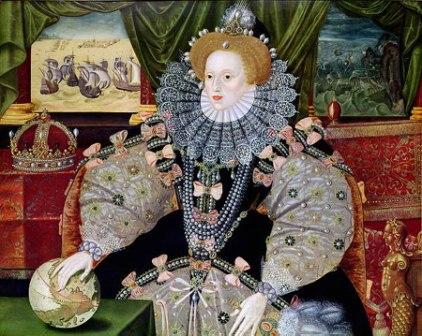I now have more than 600 followers, which is the best birthday gift I could have asked for, on behalf of her Majesty, of course!
Queen Elizabeth and her legacy live on in me, and in all of you, forever, and her birthday is a special day to call attention to her life. Thank you for being a part of that with me!
Did anyone try the Marzipan recipe I posted? If so, please send me pictures of your creations so I can post them on this blog! (see email address to the right of this post)
This week, I will be very preparing for two shows I am doing on Saturday the 17th with two of my brilliant co-workers, on the "Real Stories of Women Pirates". One of us will be portraying Anne Bonney, another will be Rachel Wall, and I will be....(drum roll) Grania O'Malley! *surprise surprise*
Grania O'Malley seems a natural choice, given that she is Elizabethan (although no doubt she
would never have referred to herself as a subject of England!) and I have long been drawn to her courageous, exciting life since my mother read me a picture book about her when I was young (thanks mom!)
The dates of her long-life almost exactly mirror Queen Elizabeth's own, Grania being born in 1530 and dying in 1603, Elizabeth of course being born in 1533 and dying the same year. The fact that Grania and Elizabeth met, negotiated terms, and parted with a new found respect for one other is just the icing on the cake to Grania's story.
 |
|
My Irish accent is almost at performance quality, although I will keep working at it until the last possible moment to get it right. I have to fight my tendency to slip back into an aristocratic London accent on certain words! By Saturday I will (hopefully) have it down!
Pictures will be shared, probably on Tuesday, with perhaps a mini-article on Grania herself!
SEMPER EADEM,
Ashlie






